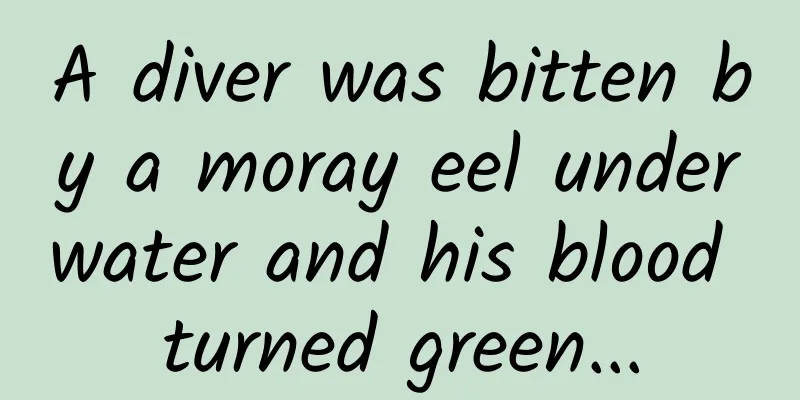Humans got whale meat and ivory, but lost valuable clues about cancer

|
Today we are going to tell you the story of a female humpback whale. This story tells us that when we take action to protect biodiversity, we are actually protecting humanity ourselves. One noon in August 2011, a familiar dorsal fin emerged from the sea off the coast of Massachusetts, USA. This dorsal fin with small white spots belonged to a female humpback whale. Scientists have been studying this humpback whale since the 1970s and named her Salt based on the conspicuous spots on her dorsal fin. Short is a uniquely marked humpback whale that scientists have been studying since the 1970s. | Center for Coastal Studies On the Shearwater, a humpback whale researcher, Jooke Robbins, aimed a crossbow at Short, ready to shoot. The crossbow was loaded with a sampling arrow, which had a special tip and a yellow buoy. Fire! The sampling arrow hit the target, and according to the design, it would take away a few cubic millimeters of meat when it was retrieved - compared to the size of the whale, this amount of damage is like a mosquito bite to a person. Robbins and her team stored the collected samples in liquid nitrogen and sent them for analysis. Eight years passed in a flash. In the May 2019 issue of the journal Molecular Biology and Evolution, a research team from the Cancer Evolution Center (ACE) at Arizona State University published a paper stating that Salt and other cetaceans, including whales, dolphins and porpoises, have evolved sophisticated means to fight cancer, such as a series of tumor suppressor genes. The new findings, along with similar work in elephants, suggest that new treatments for human cancer may lie somewhere in the evolutionary history of large mammals, somewhere in their genetic code. But even with that knowledge, scientists are losing opportunities to study these giant animals, whose numbers and the biodiversity of their habitats are in steep decline due to ongoing threats from humans. There is no doubt that whales like Salt are valuable in their own right. There are many good ethical and ecological reasons to protect large mammals. But the idea that their genes might be useful in cancer research is novel. “I never thought that cancer would be a topic of study in cetaceans, let alone any human cancer,” she said. “Although it’s very interesting and unexpected, it was not something I planned to study.” Peto's paradox: Why don't whales and elephants get cancer? In theory, large, long-lived creatures like the humpback whale Salt should have high rates of cancer. Cancer begins with cell division. First, an error occurs in one cell's division, and a potentially fatal mutation spreads to neighboring cells. If the error is not detected and suppressed, it will spread throughout the body and cause cancer. **Whales and elephants live as long as humans and have hundreds of times as many cells as humans. Yet their cells mutate, become cancerous, and kill them at a low rate. **The ACE team is studying this strange natural phenomenon known as Peto's Paradox, named after British epidemiologist Richard Peto. In the late 1970s, Peto proposed that there must be some natural selection for tumor suppressors because humans have similar rates of cancer, even though they live longer and are much larger than mice. In 2011, ACE researchers and scientists from 11 other institutes around the world first began studying the "Peto's Paradox" in the genome of humpback whales. The method they used was to compare Salt's genes with the genomes of other whales. According to the published results, the part of the whale genome that determines how and when cells divide has evolved rapidly, and the timing is consistent with the time when whales acquired their large bodies. Marc Tollis, a biologist at Northern Arizona University who joined ACE in 2015, hopes to transfer an anti-cancer gene from the whale's genome to other small mammals to help them fight cell cancer - first testing it in mice and eventually in humans. Other scientists are also studying Peto’s paradox using another large animal: elephants. In 2012, Joshua Schiffman, a pediatric oncologist at the University of Utah, began studying elephants’ cancer defenses after learning that they have extra copies of a cancer-fighting gene in their genomes . His patients lacked this cancer-fighting gene, which led to Li-Fraumeni syndrome, a rare genetic disease that predisposes people to cancer. Schiffman's team, working with ACE's Carlo Maley, local zoos, Ringling Bros. and Barnum & Bailey Circus, and the Center for Elephant Conservation, collected blood samples from elephants before circuses stopped performing and during regular veterinary checkups. In a 2015 paper published in the Journal of the American Medical Association, they reported that the extra copy of the gene in elephants triggers a type of programmed cell death, a cancer defense mechanism called apoptosis. When a cell divides and experiences some kind of DNA damage—for example, from a chemical—the cell either tries to repair itself or self-destructs to prevent the mutation from spreading to other cells. Both whale and elephant cells undergo apoptosis more often than human cells do. "We're smart, but nature is smarter," Schiffman said. "After hundreds of millions of years of evolution, nature has figured out how to solve the problem of cancer." Deep in the genetic code of elephants may lie clues to curing human cancer | Tuchong Creative Schiffman added that it's clear that elephants and whales have acquired immunity to cancer over countless generations of evolution. His team is also looking for other cancer defense mechanisms in elephant genes and trying to transfer those abilities to humans. “[These animals] haven’t just found a cure for cancer,” he added. “What’s even more exciting is that they’ve evolved ways to prevent cancer in the first place. ” Of the more than 90 species of whales that exist today, 22 have had their genomes sequenced, and the data has been added to the National Center for Biotechnology Information database (NCBI), with more to come. But when Torres began studying Salt's genome in 2015, there were only genomes for five species. Torres said the field has grown rapidly as new technologies have made sequencing cheaper and easier. Scientists have also sequenced the genomes of the three living elephant species. But that's just a start, and scientists may not yet have enough data to fully understand how these animals resist cancer. And as human activities, ecosystem destruction, climate change and other issues continue to eat away at these populations, researchers have fewer and fewer opportunities to collect samples. These creatures are getting harder to find, and the regulations protecting them are getting stricter, which can delay research. Given the rate at which these species are declining, Torres hopes this study will raise awareness of the importance of cancer research and environmental protection. “The bottom line is, since we are now living in a mass extinction event,” he said, “ we need every reason we can to conserve species. ” The current situation of animals is worrying, and valuable clues are disappearing According to the International Union for Conservation of Nature (IUCN), the conservation status of these large mammals is mixed. Some whale populations have recovered significantly from centuries of overhunting, such as humpback whales, while others remain endangered, such as North Atlantic right whales and sei whales. The elephants are also in a bad state, with African elephants listed as vulnerable and Asian elephants as endangered. Previously, Botswana lifted its ban on elephant hunting and Japan resumed commercial whaling. Conservation experts are more concerned about some hidden hazards that are not obvious, such as habitat loss. Chris Thouless, strategic adviser for Save the Elephants, a Kenyan elephant research and conservation organization, said elephants are suffering because their former habitats have been converted into industrial areas or farmland, which also leads to "human-elephant conflict." Elephants in Sri Lanka. As more and more land is developed by humans, there is less and less habitat left for elephants | Tuchong Creative Hal Whitehead, a cetacean expert at the World Conservation Union, said that in the ocean, whales are increasingly threatened by marine plastic particles and ship noise . Because vision and smell are inefficient underwater, whales use sound to find food and form social bonds, and noise can make these animals nervous. "Those species that have had the closest contact with humans are the ones that are most affected," Whitehead added. Even if those populations recover, collecting genetic data from large numbers of species presents other challenges. Samples from just one animal cannot be representative of the entire species, says David Baillie, a molecular biologist at Simon Fraser University in Burnaby, British Columbia. While a representative genome of a species from many samples is valuable, so are the oddities that can crop up in individual genomes . Genetic diversity and large populations leave a lot of wiggle room for mutations that could benefit the organism and us, if we understand them properly. “The more genomes we have, the more we can gain insight into the redundant diversity that underlies population structure,” Bailey wrote in an email, adding that “rare mutations can be very important when trying to understand disease resistance, for example.” Torres said there is evidence of strong genetic variation between regional populations of the same species, and that more effort needs to be put into cataloging the genes of the animals' closest relatives. Schiffman echoed similar sentiments, saying poaching, habitat loss and inbreeding have created a bottleneck that has compressed genetic diversity in many species, especially the largest ones. Cristiana Pașca Palmer, executive secretary of the UN Convention on Biological Diversity, said we don’t yet know how widespread the impact of habitat and species loss is on medical research. “The loss of large species like elephants and whales is just one example of the dramatic decline in species diversity in ecosystems around the world,” she wrote in an email. “When we take action to protect biodiversity, we are only protecting ourselves. ” Clues hidden in whales are far more valuable than whale meat | undark We don’t know how human activity will alter the genomes of these animals over the next few generations, and the potentially limitless data they hold. Research from the University of Southampton in the UK, for example, suggests that the median size of mammals could shrink by a quarter if humans continue to destroy undeveloped habitats. Animal genetics will need to adapt to our increasing control over the planet. Genes that a species has used to fight off many diseases, as well as other valuable genetic mutations, could inadvertently disappear in the next generation. “If we lose the opportunity to study these animals in the wild, if we don’t protect them,” Schiffman said, “we could lose treatments for many diseases.” By Doug Johnson Translation: Mo Xuan Editor: You Shiyou Compiled from: Undark |
>>: New research comes out! Who lives longer, fast or slow walkers?
Recommend
Apple releases iOS 12.3 beta: New apps coming
Apple has once again released a beta version of i...
The shocking Pillars of Creation, what is happening there?
The Pillars of Creation refers to a part of the E...
Revelation on user growth in 2020!
At a time when traffic is becoming increasingly s...
8 combinations of targeted information flow promotion methods!
Many people don’t know how to set up the targetin...
The soul of fire and thought: the dream-chasing life of a Russian female mathematician
In the history of mathematics, there is an import...
Bull Demon King - Trading Strategies of Large Institutions
Bull Demon King - Introduction to the resources o...
[Creative Cultivation Program] Can "blood washing" therapy help lose weight and lower blood lipids? Dangerous! The truth is...
When the machine starts, the garbage in the blood...
APP promotion method: How to get downloads for free?
When promoting an APP, there is a method that is ...
Multi-dimensional analysis of the trend of the "deep learning" market
[[192373]] Industry Analysis In 2016, the global ...
Message signing and encryption/decryption - Developer Q&A
Q Why do we need to launch the message encryption...
How to use Zhihu to effectively attract traffic and promote products?
What kind of platform is Zhihu? To study traffic ...
91 Ten Articles-New Energy Vehicle Industry Briefing: Xiaomi may use Great Wall Motors production line to manufacture cars
1. Li Zhenyu, Vice President of Baidu Group and G...
Is it expensive to produce a Guilin tourist supplies mini program? Guilin Tourism Products Mini Program Production Cost and Process
Mini programs provide convenience for publicity a...
Does website SEO promotion have to be published on time every day?
According to the past experience of Dongguan SEO ...
How do independent developers market their products? Overseas experts share 3 tips
[[152403]] Raghav Mathur is the chief marketing o...









